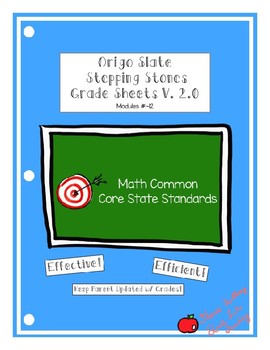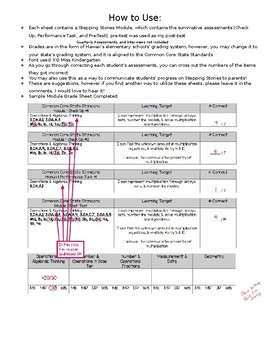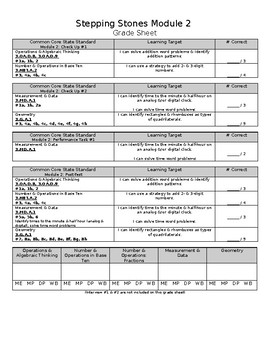Origo Slate Stepping Stones Grade 3 Module 1-12 Grade Sheets Version 2.0
There's Nothing Quite Like Teaching
244 Followers
Grade Levels
3rd
Subjects
Resource Type
Standards
CCSS3.MD.A.1
CCSS3.NBT.A.1
CCSS3.OA.A.1
CCSS3.NF.A.1
CCSS3.G.A.1
Formats Included
- Word Document File
Pages
14 pages
There's Nothing Quite Like Teaching
244 Followers
Description
Editable for your convenience.
Use these grading sheets for Origo Slate Stepping Stones Grade 3 Version 2.0 (the updated one) to help you keep track of student grades based on the Common Core State Standards (CCSS) in friendly student "I Can" statements. This is also a handy tool to keep parents updated with their child's math grades/progress. Grade sheets are provided for ALL modules!
*Assessments graded on these sheets: Check Ups, Performance Tasks, Pre-Test (used as Post-Test)
Happy grading!
Also, check out my Blogspot! A place where you can find inspiration, classroom decor ideas, and read up on my blogs. Did I mention I also have an Instagram?!
Total Pages
14 pages
Answer Key
N/A
Teaching Duration
N/A
Report this resource to TPT
Reported resources will be reviewed by our team. Report this resource to let us know if this resource violates TPT’s content guidelines.
Standards
to see state-specific standards (only available in the US).
CCSS3.MD.A.1
Tell and write time to the nearest minute and measure time intervals in minutes. Solve word problems involving addition and subtraction of time intervals in minutes, e.g., by representing the problem on a number line diagram.
CCSS3.NBT.A.1
Use place value understanding to round whole numbers to the nearest 10 or 100.
CCSS3.OA.A.1
Interpret products of whole numbers, e.g., interpret 5 × 7 as the total number of objects in 5 groups of 7 objects each. For example, describe a context in which a total number of objects can be expressed as 5 × 7.
CCSS3.NF.A.1
Understand a fraction 1/𝘣 as the quantity formed by 1 part when a whole is partitioned into 𝘣 equal parts; understand a fraction 𝘢/𝑏 as the quantity formed by 𝘢 parts of size 1/𝘣.
CCSS3.G.A.1
Understand that shapes in different categories (e.g., rhombuses, rectangles, and others) may share attributes (e.g., having four sides), and that the shared attributes can define a larger category (e.g., quadrilaterals). Recognize rhombuses, rectangles, and squares as examples of quadrilaterals, and draw examples of quadrilaterals that do not belong to any of these subcategories.





